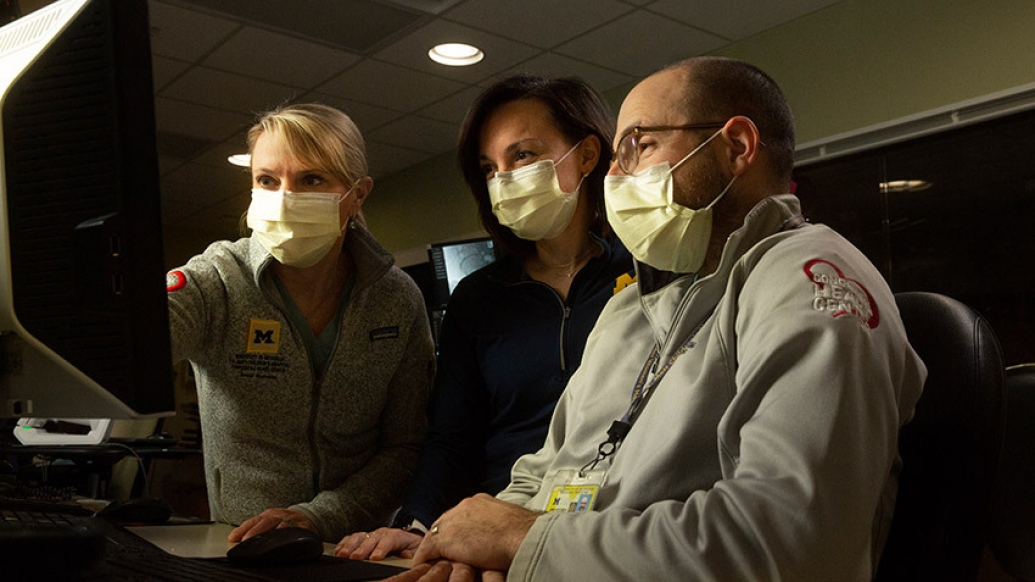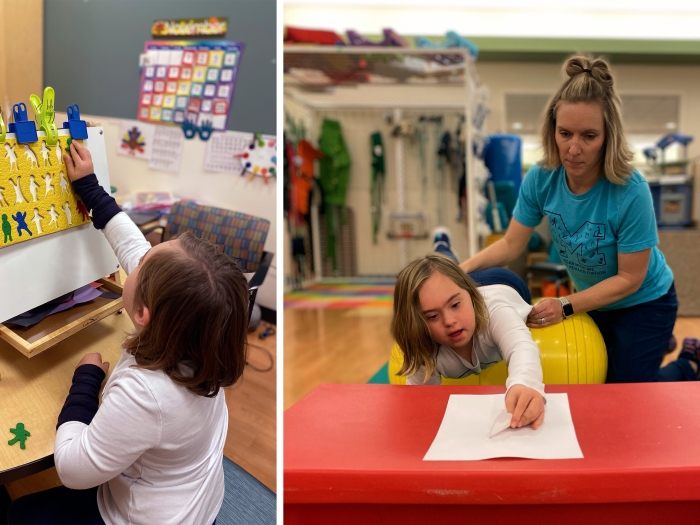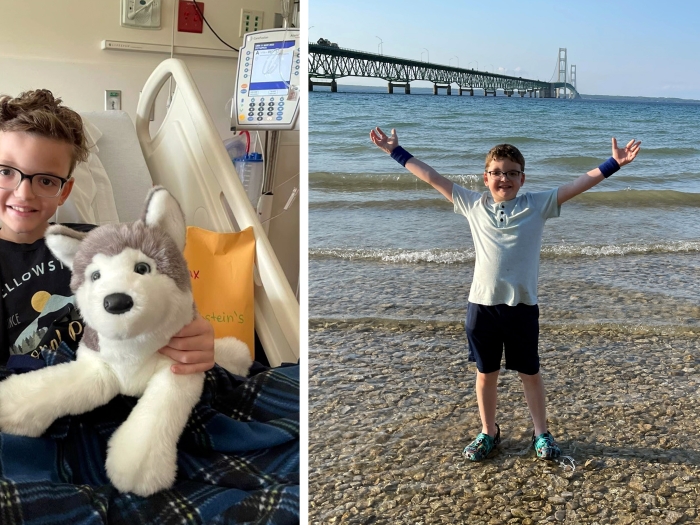Novel trial compares outcomes between a catheter-based stent and surgical shunt for children with insufficient blood flow between their heart and lungs.
9:52 AM
Author |

Babies with various forms of congenital heart disease need a stable source of blood flow to their lungs to survive.
There are two schools of thought on the best approach to treat these children: one requires surgery and the other is a catheter-based procedure.
Both are safe and effective and regularly used, but each have their own pros and cons.
Now, a novel, multicenter trial supported by the Pediatric Heart Network and co-led by investigators from the University of Michigan Health C.S. Mott Children's Hospital will compare outcomes between the two procedures to help physicians determine which approach is best for children with this type of inadequate blood flow.
The COMPASS trial, which opened in June and is expected to be three to four years long, will study morbidity and mortality rates between newborns who receive a catheter-based ductal stent versus those who undergo surgery to get a systemic to pulmonary artery shunt. The study will enroll between 300 newborns across 23 centers in North America for two years and follow them for at least a year after that.
"Different centers use different approaches based on their own experiences and views on the best method," said Mott pediatric cardiologist and trial co-chair Jeffrey Zampi, M.D. "This is one of those rare opportunities to compare two treatment strategies that are similar but have potentially very different implications for each patient."
"We have a wide range of patients with different heart anatomies and hope this research will help us understand if one approach is better for some kids versus others."
Investigators from Morgan Stanley Children's Hospital and St. Louis Children's Hospital, along with the Mott team, are leading the study. The trial will be conducted through a unique model of large national research networks, including the Congenital Cardiac Research Collaborative and Pediatric Cardiac Critical Care Consortium (PC4), coming together to collaborate to support the study.
We have a wide range of patients with different heart anatomies and hope this research will help us understand if one approach is better for some kids versus others.Jeffrey Zampi, M.D.
Mott will serve as the hub to integrate trial data from these networks through leadership of the Cardiac Networks United Data Core, which houses the most comprehensive collection of congenital heart data worldwide.
"This is the first multicenter randomized comparative trial evaluating a catheter based versus surgical approach in congenital heart disease," said Jennifer Romano, M.D., a pediatric heart surgeon at the Mott Congenital Heart Center and trial co-chair. "We are joining other large centers with expertise in both procedures and have a shared interest in coming together to find the answer that's best for each patient."
More on the trial
Which patients does this impact?
Infants who do not have a normal source or insufficient source of pulmonary blood flow. This could include those with conditions such as pulmonary atresia, pulmonary stenosis, Tetralogy of Fallot, and hypoplastic right heart anomalies including tricuspid atresia.
Babies with these conditions often don't have a proper connection from the pumping chamber to the pulmonary artery. Because blood does not travel its normal route to pick up oxygen from the lungs, these children cannot get enough oxygen to survive without interventions that augment blood flow to their lungs.
What two treatment methods will researchers compare?
There are two recommended approaches to establishing a stable source of pulmonary blood flow for babies whose heart conditions block or prevent normal blood connections.
The traditional procedure for decades involves a surgical shunt to reroute blood from a major artery to the pulmonary artery, allowing more blood to be oxygenated by the lungs and encouraging the pulmonary arteries to grow. The shunt is temporarily used until the child outgrows it, needing additional surgery to repair or further palliate their heart defect.
The newer alternative is a transcatheter ductal stent, which is implanted into a fetal connection from the aorta to the pulmonary arteries known as the ductus arteriosus to maintain an open path for blood flow to the lungs. This involves inserting a thin tube into a blood vessel and guiding it to the heart and stenting this fetal blood vessel supplying blood to the lungs (pulmonary artery) to keep this structure open
"Previous studies show that both procedures are equally effective in improving blood flow to the lungs and the rest of the body," Romano said. "But each has different advantages and disadvantages."
"We hope we can learn which kids may be better treated with a surgical stunt versus a ductal stent to help us improve our decision making for patients and choose the intervention that will be best long term."
The catheter procedure is less invasive, and babies often get off the ventilator faster and go home sooner, she says. For newborns, reducing time in the hospital could help prevent developmental delays often experienced by those who spend long periods of time in the hospital recovering from procedures compared to those who recover faster and can go home to eat, sleep and interact normally.
However, ductal stenting more commonly requires repeat interventions compared to surgical shunts.
Researchers will follow children in each group to see how well pulmonary arteries grow and function over time.
What outcomes will researchers evaluate?
Researchers will rank different measures, including length of hospital stay, complications, how shunts perform technically and the likelihood of requiring reinterventions.
Researchers will also track one-year outcomes of patients who don't meet criteria for the trial through a companion registry to help with future related studies. The registry will allow additional analyses, and support study of variations in practice among institutions and comparative effectiveness of treatment strategies for newborns with inefficient pulmonary blood flow.
Longer term studies may also track neurodevelopment, exposure to anesthesia, ICU stay and a child's overall health physically, psychologically, and developmentally.
"Through partnering with colleagues at peer institutions, we will be able to collect a rich dataset that will support both this trial and further studies impacting newborns with these conditions," Zampi said.
Sara Pasquali M.D., who serves as a trial co-chair is also a U-M investigator involved in the study.

Explore a variety of healthcare news & stories by visiting the Health Lab home page for more articles.

Department of Communication at Michigan Medicine
Want top health & research news weekly? Sign up for Health Lab’s newsletters today!





